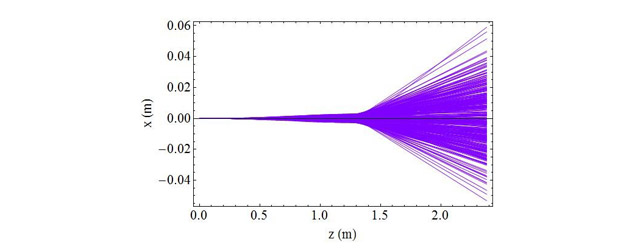Slowing dynamics of a supersonic beam (Vol. 47 No. 1)

This investigation of the slowing dynamics of a supersonic atom beam by a counter-propagating resonant laser light is characterized by two special features: (i) a close coupling between simulations and experiments using a nozzle beam of metastable argon atoms, (ii) the use of a Monte-Carlo (MC) scheme aimed at analysing step by step the slowing process and describing in a realistic way atom random walks due to the spontaneous emission. It allows to calculate 2D images and radial profiles of the slowed beam, in good agreement with experiment. Other important characteristics as angular aperture, velocity spreads, coherence radius (not easy to be measured experimentally), etc. also result from the simulation. Since the 3D atomic motion within the laser field is considered, border effects, not directly accessible in a simple radiative force model, can be studied. The calculations, assuming a point-like source, reproduce the experimental characteristics of the slowed beam. In general a laser beam is an efficient tool to manipulate the atomic motion. Its interaction with atoms can be accurately characterized by the present MC-code. Actually any configuration combining resonant light and atoms is relevant (if the semi-classical approximation is valid). A “pushing” laser to generate a slow atomic beam from a magneto-optical trap has been successfully tested with metastable argon atoms. The MC-code predicts accurately the characteristics of the generated beam.
M. Hamamda, T. Taillandier-Loize, J. Baudon, G. Dutier, F. Perales and M. Ducloy, Slowing dynamics of a supersonic beam, simulation and experiments, Eur. Phys. J. Appl. Phys. 71, 30502 (2015)
[Abstract]







